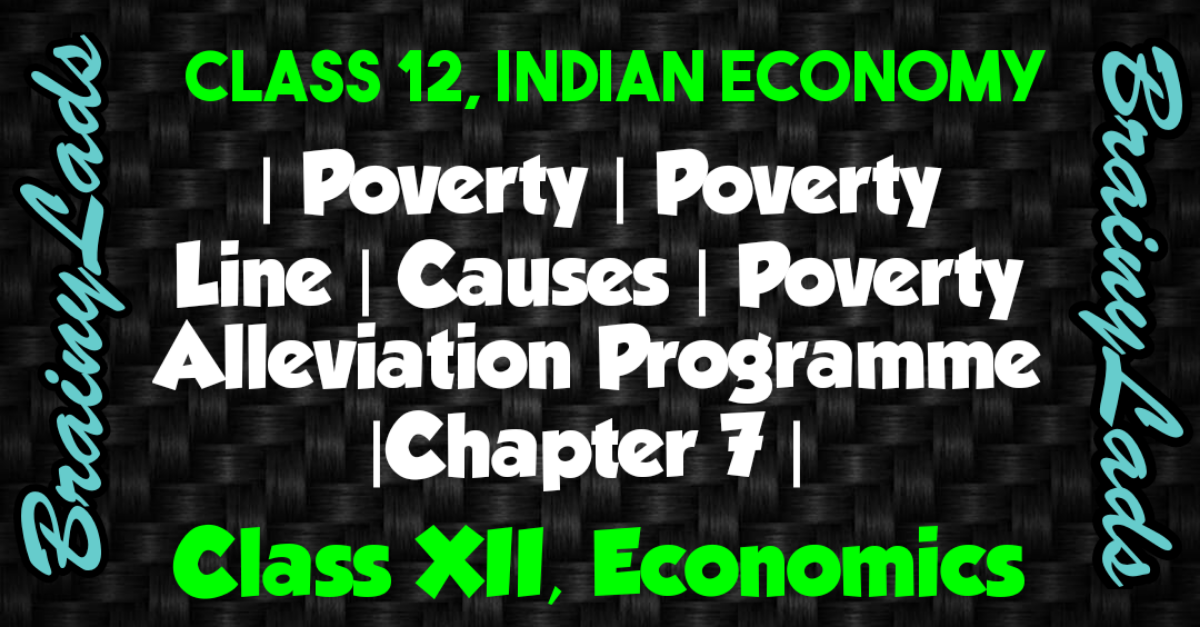Infrastructure | Importance | Types | State of Infrastructure | Chapter 11 |
Table of Contents
Infrastructure | Importance | Types | State of Infrastructure | Chapter 11 |
Meaning of Infrastructure
Infrastructure refers to the all the basic services and facilities which are provided to different kinds of sectors of the economy. It acts as a support system for the economic and social development of a country by raising the productivity of factors of production and by improving the quality life of people living in the country.
Importance of Infrastructure
- It increases productivity.
- It provides employment opportunities.
- It helps in the inducement of foreign capital.
- It rises the ability to do the work.
- It provides the facility of outsourcing.
- It raises the size of the market and generates linkages in production.
You May Also Read
- Indian Economy on the Eve of Independence | Sectors | Chapter 1|
- Economic Planning | Five Year Plans | Goals | Achievements | Chapter 2 |
- Agriculture Sector | Features | Problems | Green Revolution | Chapter 3 |
- Strategy of Industrial Growth | IPR-1956 |Features | Impacts | Chapter 4 |
- India’s Foreign Trade | Inward Looking Trade Strategy | Chapter 5 |
- Economic Reforms Since 1991 | Chapter 6 |
- Poverty | Poverty Line | Causes | Poverty Alleviation Program |
- Human Capital Formation |Sources | Problems Faced |Roles |
- Rural Development |Objectives | Challenges |Types |
- Unemployment | Level of Unemployment | Consequences |
- Environment | Sustainable Development | Features |
- India | China | Pakistan | Comparative Study |
Types of Infrastructure
- Economic Infrastructure: Economic infrastructure refers to the element which directly increases the economic system of the country and improves the quality of resources. It includes
- Communication
- Science and Technology
- Power
- Transport
- Financial Institutions
- Social Infrastructure: Social infrastructure refers to the element which indirectly increases the economic system of the country and improves the quality of human resources. It includes
- Health
- Education
- Law and Order
- Housing etc.
State of Infrastructure in India
Around 5% of the GDP depends on infrastructure of the country. The government and the private sector play a crucial role for the development of infrastructure in the country. The need of development of infrastructure is more in rural area which includes rural energy requirement, sanitization facility, health care and healthy drinking water facility etc.
- Energy: Energy is considered to be the lifeline of all the sectors of the economy. In primary sector, energy is required to operate tubewells whereas energy is required in secondary and tertiary sector for operating machineries and computers respectively.
- Sources of Energy
- Commercial Source of Energy: The energy which is used for commercial purpose in the firms, factory and has an established market for transaction of sales and purchase is called commercial source of energy such as; Coal, petroleum, natural gas, electricity etc.
- Non-Commercial Source of Energy: The energy which is not used for commercial purpose in the firms, factory but provided free of cost to rural households is called non-commercial source of energy such as; firewood, agricultural waste etc.
- Conventional Source of Energy: Conventional source of energy is that source of energy which is present in a limited nature and requires long time for the formation such as; Coal, electricity, petroleum and natural gas.
- Non-Conventional Source of Energy: Non-conventional source of energy is that source of energy which is present in abundant quantity and has been discovered or explored in the recent past. For example: biomass, solar energy, wind energy etc.
- Other Different Sources of Energy
- Thermal Energy: The thermal contributes almost 70% to the total energy.
- Nuclear Energy: The nuclear energy contributes almost 2% to the total energy.
- Hydro and Wind Energy: The hydro and wind energy contributes 28% to the total energy.
- Electricity
Electricity is the most visible form of energy which can be identified with the civilisation of an area.
- Challenges in Power Sector
- Insufficiency in installed capacity.
- Not fuller utilization of the capacity.
- Loss of energy during transmission and distribution.
- Cannot be stored for longer period.
- Inefficiency of operations.
- Less role of private sector.
- Losses incurred by electricity boards.
- Measures Taken
- Increase in the production capacity.
- Reduction in the loss of transmission and distribution.
- Use of LEDs, CFL to save energy.
- Privatisation in the power generation facility.
- Improvement in the Plant Load Factor (PLF) for fuller utilization of capacity.
- Health: The word health does not mean absence of diseases but it also includes potential of an individual. It is a holistic process which is related to the overall growth and development of the country and work as a yardstick for the well-being of an individual.
- State of Health Infrastructure
- The public health care services are not sufficient for the bulk of population. There is a wide gap between the utilization of health care facilities for rural or urban people and rich or poor.
- Steps to Improve Health Care Infrastructure
- Indian system of medicines should be explored more in order to provide medicines at a cheaper rate.
- Hospitals need to be set-up in rural areas in order to increase the health care facility in rural areas.
- The women’s health should be taken care of to curb the cases of foeticide and mortality.
- NGOs and private sector should be regulated for the development of health care service sector in the country.
India’s Healthcare System
- Primary Healthcare: It includes basic healthcare facility for children and maternal and are mostly set up in the rural areas or small towns which is managed by a single doctor. It also educates the people for identifying and controlling the diseases.
- Secondary Healthcare: The healthcare institutes have the facilities of surgery, x-rays and are generally located in the big towns and district headquarters where patients are referred by PHCs.
- Tertiary Healthcare: This sector includes the use of high-end medical equipment which offer specialised medical facilities and undertake all the complicated healthcare problems such as AIIMS, PGI and NIMHNS.
Expansion in Healthcare Sector leads to
- Decline in death rate.
- Rise in life expectancy rate.
- Decline in infant mortality rate.
- Control over deadly diseases.
————————————————————————————————————————————–
For more updates, subscribe to our website BrainyLads


